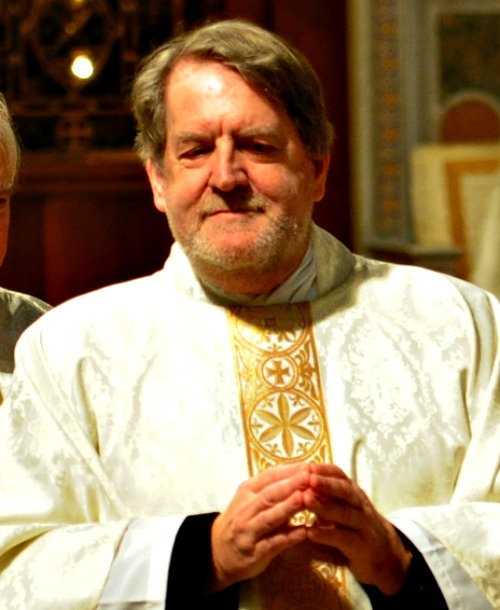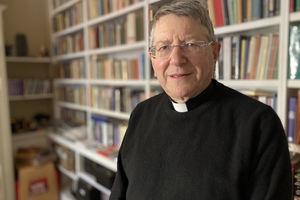‘What We Have Is a New Ecumenical Instrument’
COMMENTARY: Anglicanorum Coetibus, Five Years Later

It was no accident that the apostolic constitution Anglicanorum Coetibus was promulgated on the feast of that leading reformer and Counter-Reformation divine St. Charles Borromeo. Some have dismissed the document as no more than a pastoral response to groups of disenchanted Anglicans.
What we have here, however, was not just a pastoral response, but a new ecumenical instrument.
As a pastoral response, Anglicanorum Coetibus extended assistance already given to incomers. In July 1980, Pope St. John Paul II had set up a pastoral provision for groups from the Episcopal Church seeking communion with the Holy See.
In 1983, the Book of Divine Worship emerged. Based on the Book of Common Prayer, 1979, it was to be used in the worship communities of former Episcopalians. In 2007, the Congregation for the Doctrine of the Faith extended these arrangements to “continuing Anglicans,” those who had left the Anglican Communion and formed new ecclesial bodies.
Under this pastoral provision, more than 100 former Episcopalian clergymen were ordained as Catholic priests, the catalyst for the exodus from the Episcopal Church being the ordination of women. The canon enabling women priests in the Church of England happened some years later (1994), and though the Catholic hierarchy of England and Wales did not embrace the corporate mechanism of the pastoral provision, nearly 300 Anglican priests individually became Catholic priests around that time.
Implementing Anglicanorum Coetibus, the Personal Ordinariate of Our Lady of Walsingham was erected on Jan. 15, 2011. By setting up a distinct jurisdiction, the Holy See was obliging the hierarchy of England and Wales to accept not individual Anglicans but groups: Coetus means “group.” Unlike the clergy and parishes of the pastoral provision in the United States, which were responsible to the local bishop, these groups were to be under an ordinary who has similar powers to a diocesan bishop.
But this was not just a matter of extending the corporate dimension of the pastoral provision to the U.K.: Similar ordinariates were set up in the U.S. (Chair of St. Peter, Jan. 1, 2012) and Australia (Our Lady of the Southern Cross, June 15, 2012).
The U.K. (including Scotland) has nearly 50 groups, North America (including Canada) nearly 40 groups and Australia about 10. The U.K. ordinariate has more than 80 priests and three seminarians and is approaching 1,500 laity.
These numbers suggest that we should look beyond “pastoral response” to describe the vision of Pope Emeritus Benedict XVI. The ordinariate initiative has not welcomed more souls than the pastoral provision of 1980, and most of those who have joined the ordinariates, arguably, would have become Catholics anyway.
The significance of Anglicanorum Coetibus, as seen five years on, is not, then, its “embrace of those shivering at the gates,” to use Blessed John Henry Newman’s phrase. Nor is it its acceptance of married Protestant clergy: That was permitted by Pope Pius XII and has become common since 1980. Nor is the significance found in some of the more radical features of the apostolic constitution, such as the appointment of married priests as ordinary (all three ordinariates presently have a priest rather than a bishop as ordinary).
Its true significance is in its embrace of what it calls “Anglican patrimony,” which is thus re-integrated into the Catholic Church. Not everything is fully accepted — there are no signs of married laymen being presented for ordination — but there are interesting aspects to governance that have clear Anglican precedents.
One could argue that Divine Worship, the liturgy of the ordinariates, ought to be seen as a fruit of the pastoral provision rather than of Anglicanorum Coetibus. But it was unripe fruit. In Anglicanorum Coetibus, Anglican liturgy is given a new and permanent place within the Latin rite. Thus, we read:
Not excluding liturgical celebrations according to the Roman rite, the ordinariate has the faculty to celebrate the holy Eucharist and the other sacraments, the Liturgy of the Hours and other liturgical celebrations according to the liturgical books proper to the Anglican tradition, which have been approved by the Holy See, so as to maintain the liturgical, spiritual and pastoral traditions of the Anglican Communion within the Catholic Church, as a precious gift nourishing the faith of the members of the ordinariate and as a treasure to be shared. (5, 3)
Here is a vision of what it might be to be “united not absorbed,” the vision of Benedictine monk Lambert Beauduin nearly a century ago (1925). It may be that Anglican and Catholic ecumenists, within the comfortable fastness of their own denominations, write off Anglicanorum Coetibus as pastoral care of disenchanted Anglicans, but Pope Emeritus Benedict had in mind something more significant than that, whose time is not yet fulfilled. Seen as an ecumenical instrument, it is not hard to imagine Anglicanorum Coetibus as providing a strategy for reaching out beyond Anglicanism to other groups of Christians. Here might be a way for groups of Lutherans — or Methodists — or whomever — to enter into the full communion of the Catholic Church.
Msgr. Andrew Burnham, formerly the Anglican bishop of Ebbsfleet,
is now an assistant to the ordinary in the
Personal Ordinariate of Our Lady of Walsingham.
- Keywords:
- anglican ordinariate
- anglicanorum coetibus
- catholic faith
- ecumenism
- our lady of walsingham
- pope emeritus benedict xvi

















